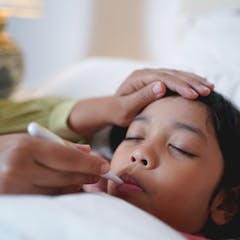
Articles on Pathogens
Displaying 1 - 20 of 89 articles

Bushwalkers with smartphones could help scientists track a fungus lethal to many of Australia’s most loved trees.

People should minimise contact with birds in areas affected by bird flu viruses, including farms and settings where live animals may be sold or slaughtered.

Your immune system is often able to fend off pathogens it’s never seen before. But defending your body against all of them all at once is a tough challenge.

Gut bacteria consume the nutrients that harmful pathogens need to survive, thereby keeping them in check, a new study finds.

You’ll never look at bagged lettuce the same way again.

The bacterium that causes Lyme disease is a master of disguise, changing its appearance to evade the immune system as it moves from the ticks that carry it to humans or animals.

The heat and chills that come with fever are not only uncomfortable but also metabolically costly. Increased body temperature, however, can make all the difference when you’re sick.

Researchers simulated thousands of scenarios of an ancient pathogen being released into modern ecosystems. In the worst cases, up to one-third of host species were destroyed.

Time and information is of the essence when tackling infectious diseases across countries and continents.

Museum archives hold biological specimens that have been collected over years or even decades. Modern molecular analysis of these collections can reveal information about pathogens and their spread.

This whirlwind tour of social history describes how infectious diseases have shaped humanity at every stage. It suggests reducing inequality will give us our best chance of surviving future plagues.

Dangerous fungal infections are on the rise globally. But we have few drugs that work and no prospect of anti-fungal vaccines any time soon.

As tempting as it is, it is not possible to “supplement” oneself out of a bad lifestyle.

An effective nasal vaccine could stop the virus that causes COVID-19 right at its point of entry. But devising one that works has been a challenge for researchers.

Listeria causes serious illness and food recalls nearly every year.

Plant care advice abounds on TikTok, Twitter, Instagram and YouTube – but not all of it is good. A plant expert debunks four common recommendations.

Following the global spread of COVID, there have been widespread calls for blanket bans on the consumption and trade of wild animals. But such bans may have unintended consequences.

Over 800 sites across the US report coronavirus data from sewage to the CDC. Here’s how this kind of surveillance system works and what it can and can’t tell you.

Normally land-bound pathogens that cause deadly diseases for both humans and animals can cling to microplastics and end up in your seafood.

Some ‘influencers’ are pushing a raw-meat diet. Here’s why you should avoid it.
